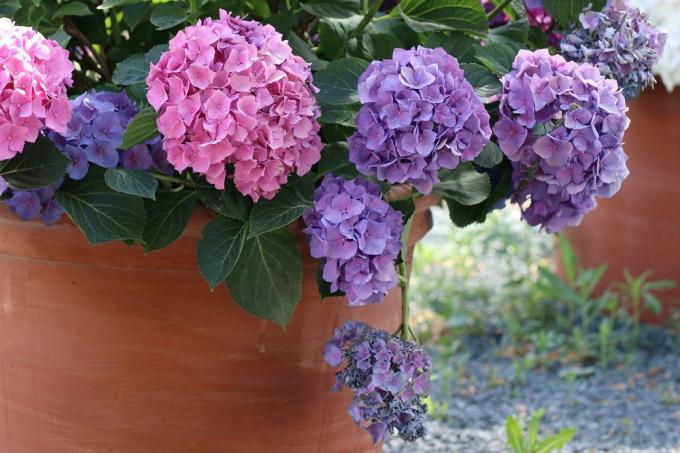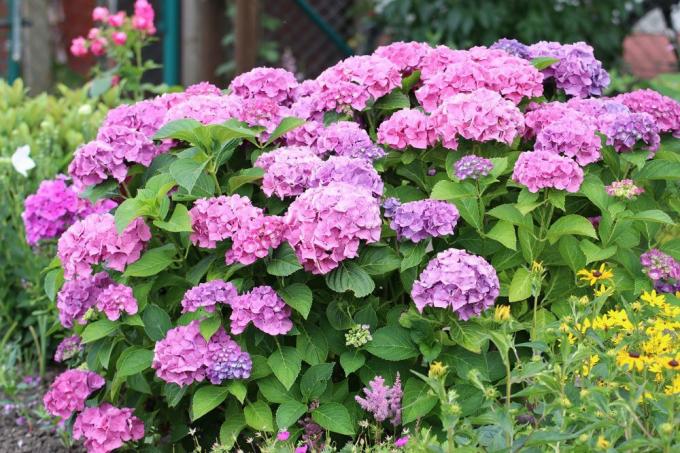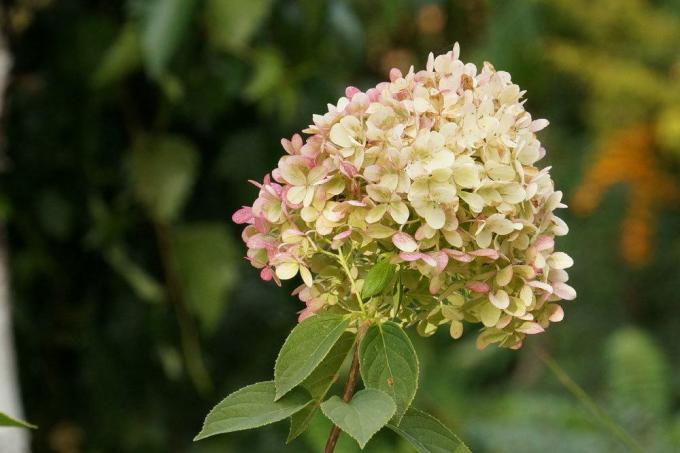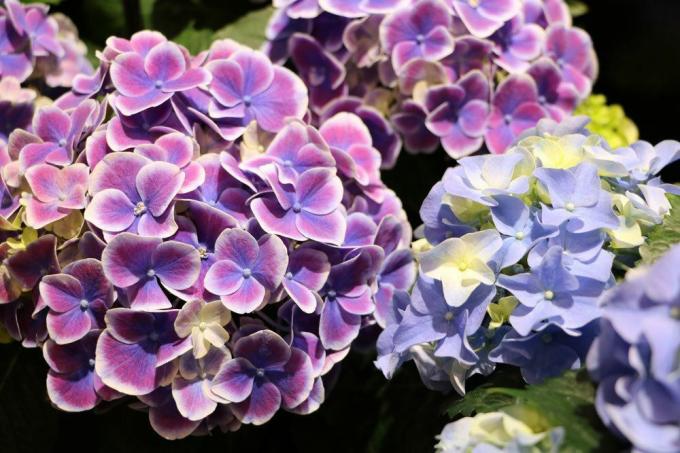
table of contents
- The best location
- Hydrangeas for the shade
- Hydrangeas for the sun
Hydrangeas are considered garden classics and can be grown in German gardens without any problems, as long as they are properly cared for in winter. Especially the garden hydrangeas (bot. Hydrangea macrophylla), which have been cultivated in Japan for hundreds of years, are a highlight in your own green oasis and need a suitable location in addition to proper care. However, this can differ according to the type of hydrangea, which you should definitely pay attention to before planting.
The best location
The question of the correct location for the hydrangea is not as easy to answer as it seems at first glance. It is true that all hydrangea species feel comfortable in partial shade, but many of the species can use other locations that are not only partially shaded. The classic location of the hydrangea in Central Europe and Germany is described using the garden hydrangeas.
- Light requirement: shady to partially shaded
- Location: west, north
- protected from drafts, especially in winter

Garden hydrangeas are particularly satisfied with these location characteristics, as they can only tolerate full shade for a short time and quickly die of thirst in direct sunlight. For this reason, the garden hydrangeas should not be exposed to other site conditions, as this would otherwise lead to severe stress. Most of the other hydrangea species also prefer this location and can be kept like garden hydrangeas without any problems. The reason for this lies in the home of the garden hydrangeas. In Japan and East Asia they grow on streams, rivers and forest edges that are quite humid. Exactly these points must be considered when keeping hydrangeas. Other hydrangeas for this location are the following.
- Chinese hydrangea (bot. H. heteromalla)
- Bract hydrangea (bot. H. involucrata)
- Velvet hydrangea (bot. H. aspera subsp. sargentiana)
These all come from the East Asian region and are therefore dependent on the local conditions there. The advantage: You can plant different species in one location and enjoy the sun and shade to the full.
Tip: You should never place garden hydrangeas in front of a south wall without shade, as it would burn there within a short time. Since the heat builds up on south walls, the soil dries out faster and since hydrangea species are so thirsty, this has a negative effect on growth.
Hydrangeas for the shade
Which species tolerate shady locations?
Garden hydrangeas aren't the only types of hydrangeas to keep in your garden. Even if you only have very sunny or dark locations available, the genus offers many other taxa that are suitable for them. It is interesting to note with some species that they prefer the shade or partial shade and only want to feel some sun in between. This, of course, makes it easier to keep it if you have a lot of shade in the garden. The following hydrangeas belong in this group, but note that each one can tolerate a different amount of shade.
- Forest hydrangea (bot. H. arborescens): partially shaded to shady
- Panicle hydrangea (bot. H. paniculata): partially shaded to shady
- Climbing hydrangea (bot. H. petiolaris): shady to partially shaded
- Oak-leaved hydrangea (bot. H. quercifolia): only partially shaded
- Plate hydrangea (bot. H. serrata): only partially shaded

All of these hydrangea species have one thing in common, with the exception of the forest hydrangea: their flowers are not grouped together in the flower balls, as in the garden hydrangea, for which the species is so famous. The panicle hydrangea, for example, as the name suggests, has flowers that are arranged in panicles and thus have a completely different character than the well-known representative. The climbing hydrangea, on the other hand, has inflorescences that are also panicles, but are structured completely differently. H. anomala, the "Japanese climbing hydrangea", which really hardly needs any sun and even prefers dark surfaces for climbing. It hardly develops any adherent roots on white walls.
Tip: Sometimes a garden hydrangea is offered as a plant for completely shady locations, but acts This is mostly a forest hydrangea, which is often confused because of its similar floral decorations will. The farmer's hydrangeas, another term for the garden hydrangea, can tolerate shade for a long time, but they prefer partial shade and sunlight much more.
Hydrangeas for the sun
Are there hydrangeas for sunny locations?
Hydrangeas are known to avoid the sun, but there are two species that like to bathe in the sun despite their partial shade. The panicle hydrangea and oak-leaved hydrangea are even suitable for sunny to shady locations, as long as you have enough water and a moist soil that doesn't dry out quickly. If you decide to plant these species in direct sunlight, you should always pay attention to the moisture at the location of the plants so that they do not dry out.

Balcony or terrace
The above information only applies to hydrangeas that are planted in the garden and cannot be moved. You have to place the hydrangeas differently on a balcony or terrace, as the heat and solar radiation is usually much higher on them. For this reason, you definitely need to pay attention to the following points when choosing hydrangeas of any kind on the balcony or terrace.
1. Areas completely facing south should be avoided. Even panicle hydrangeas or oak-leaved hydrangeas can be damaged by full sun on the balcony or terrace. Tiled surfaces in particular can get very hot when exposed to high levels of sunlight and additional water evaporates. An orientation to the west or east is recommended here, otherwise a shady place.
2. Water is important because of how it is kept in the bucket. Since the plants cannot draw moisture from the soil, you need to water more frequently and, in general, pay more attention to the care of the hydrangea.
3. Sun protection is recommended if you only have south-facing balconies or terraces. Likewise, you could just move the hydrangea out of the sun over midday if that is possible.
With this information, nothing stands in the way of keeping a bucket. Nevertheless, you have to be careful not to water the potted plants too often or to cause waterlogging, otherwise a pest infestation threatens. Scale insects, in particular, target the flowering plants and can cause great damage if the hydrangeas do not get enough shade on the balcony.

Tip: Some of the species that tolerate shady spots can easily be kept in the tub on a north-facing balcony all year round. This means that you can enjoy the flowers of the farmer's or forest hydrangeas, for example, even if your balcony faces north and hardly allows any other balcony plants.



